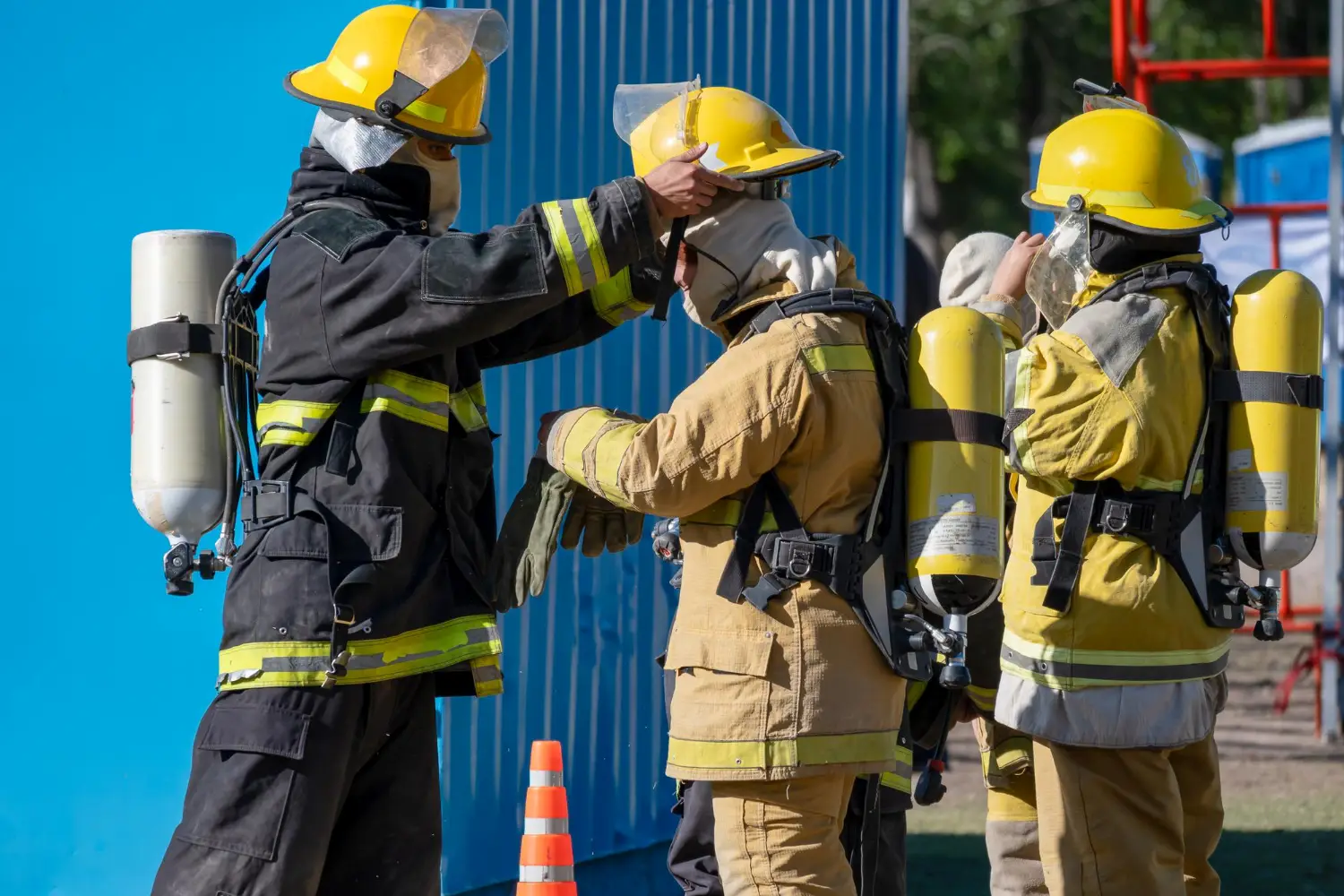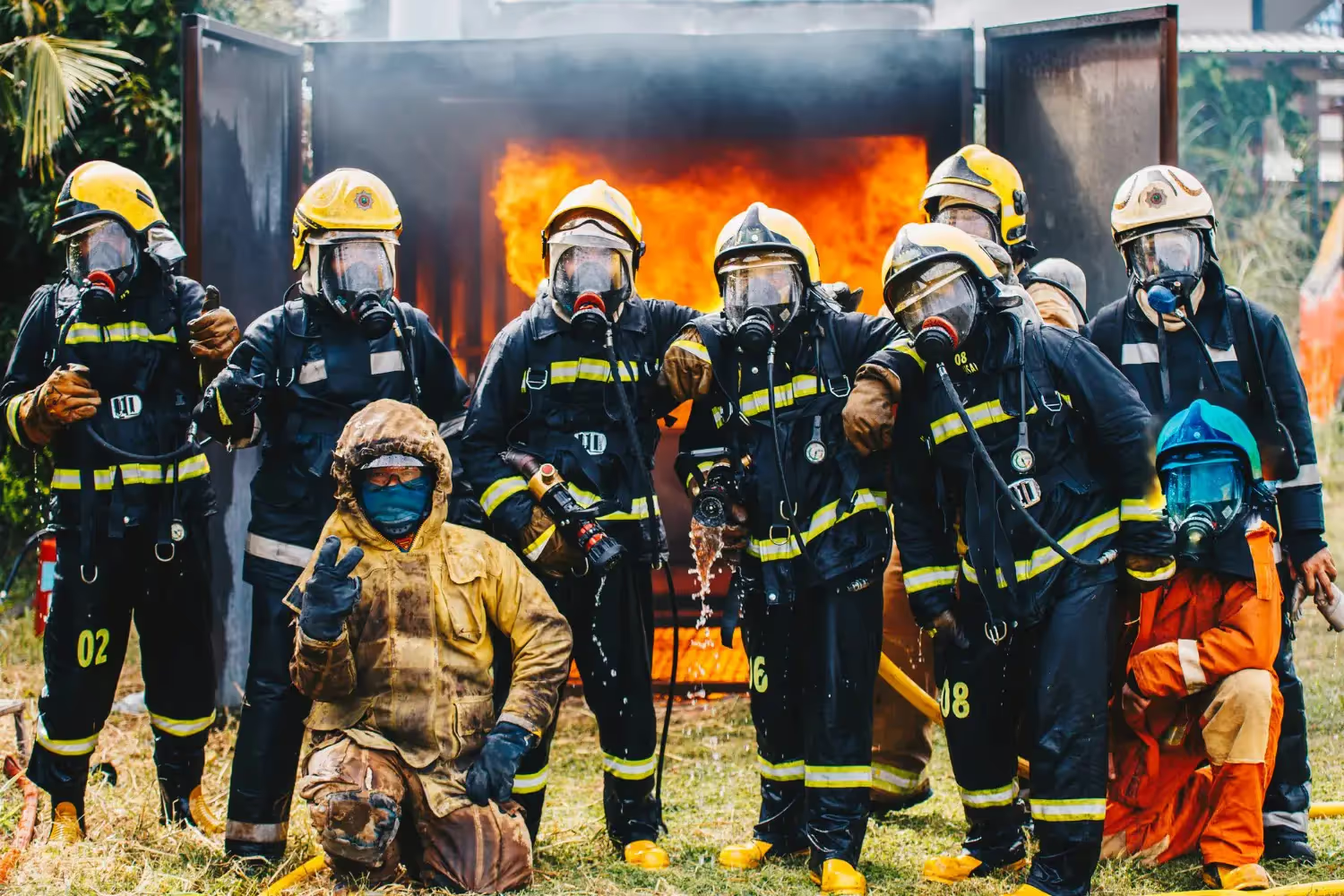The Ultimate Guide to Fire Arson Investigation Training in 2024

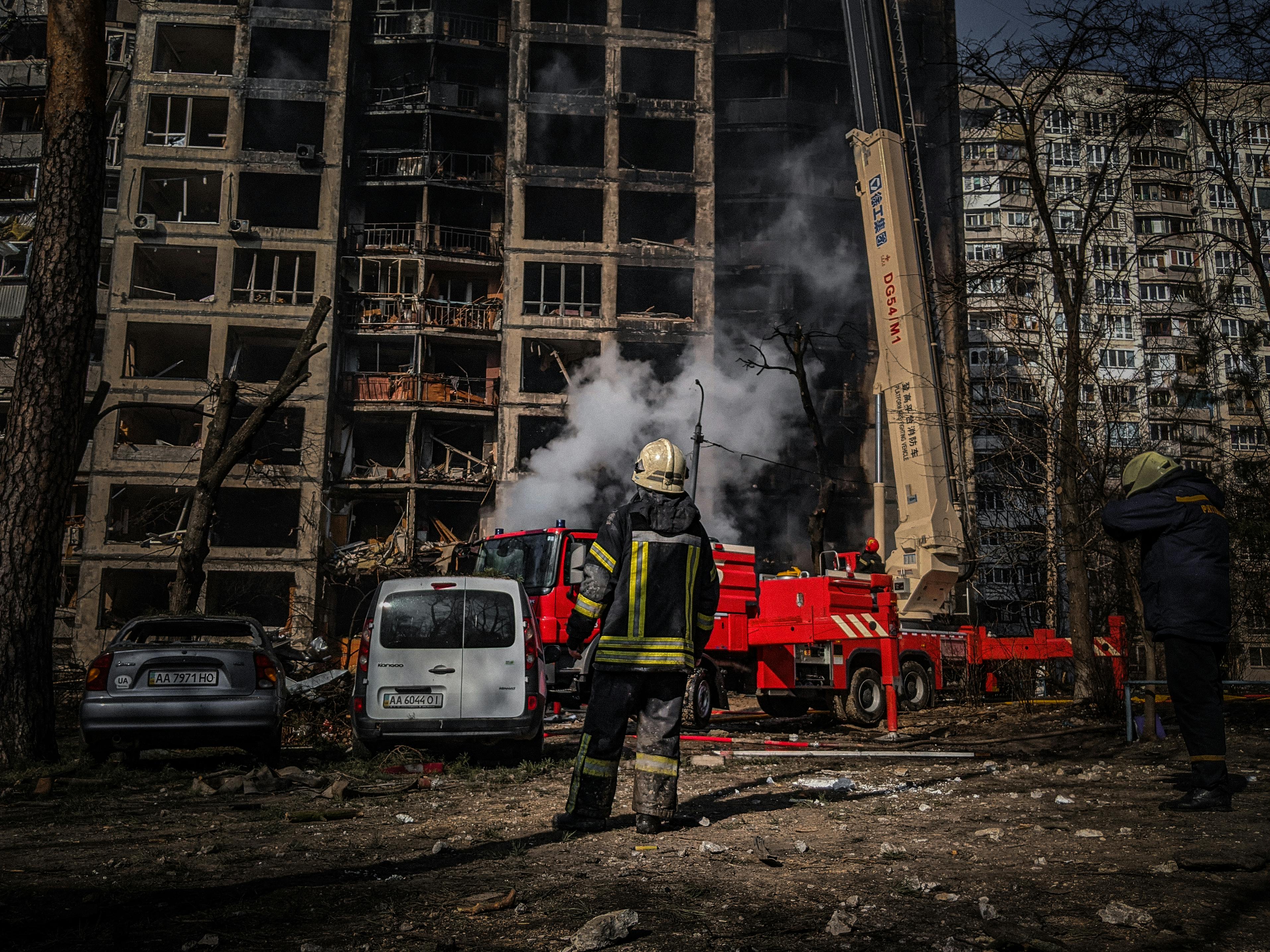
Welcome, and thanks for joining us in our comprehensive guide on everything you need to know about fire arson investigation training in 2024. Over the course of this article, we’ll tackle the nitty-gritty of this complex and vital subject. Covering everything from the basics of arson investigation to all the latest tools and technological innovations, we’ll aim to break the contents down into informative, useful, and clear segments.
So, whether you’re a seasoned fire investigator looking to brush up on the latest developments or you’re brand new to arson investigation and eager to get started on this fascinating topic, we’re glad to have you with us as we dive into this challenging but inspiring subject.
Table of Contents
- Fire arson investigation demands a unique blend of scientific know-how and hands-on skills.
- Training programs like AFATC (Advanced Fire and Arson Training Complex) provide access to advanced, scenario-based learning.
High-tech tools like fire modeling software and digital case management platforms enhance the efficiency of investigations. - Continuous education and accreditation are essential for career progression.
- The investigation process is regulated by ethical and legal standards, ensuring integrity and observance of the law.
So, what exactly is fire arson investigation? Well, essentially, an arson investigator’s job is to figure out what caused a fire. Using elements of fire science, forensic analysis, and criminal investigation, they work to determine whether a fire was accidental or deliberate, finding evidence to support their conclusion along the way. If they suspect arson, investigators will collaborate with law enforcement to gather and share evidence to help identify the perpetrator and bring them to justice.
With each passing year, new technologies and training opportunities continue to evolve the role of fire investigators. That said, the profession’s core skills remain the same – a deep understanding of fire behavior, knowledge of building construction, and excellent evidence-collecting skills.
Roles and Responsibilities
Examining the scene of a fire may be an arson investigator’s main task, but in truth, the job involves a huge range of duties. During their investigation, they’ll need to collaborate with various agencies and question witnesses. Then, following the initial arson investigation, they may need to make an appearance in court, testifying as an expert witness.
Such varied responsibilities naturally demand a wide range of skills. Beyond the hard skills of fire science and forensic analysis, arson investigators must have a keen eye for detail and be able to communicate effectively when working with others.
Basic Requirements for Arson Investigators
For a career as an arson investigator, you’ll typically need a combination of a solid education background, some relevant professional experience, and, as we mentioned, a handful of keenly trained skills. Let’s take a closer look at what you’ll need to get on the pathway.
Educational Background
A degree or certificate in fire science or criminal justice is a great place to start. With such a qualification, you’ll build a solid foundation in some of the core principles of arson investigation, like fire behavior and investigative techniques. Additionally, you could choose to pursue a more specialized qualification, like those offered by the International Association of Arson Investigators (IAAI).
For more info on educational pathways and certifications you’ll need to become a fire investigator, check out our guide on How to Become a Fire Investigator.
Essential Skills
As well as a suitable educational background, there’s a number of soft skills that you’ll need to complement your fire arson investigation training. To aid in finding and piecing together evidence, excellent attention to detail, strong analytical thinking, and good logic are all must-haves. Not only that, but you’ll also need good people skills and effective communication. After all, today’s arson investigators spend a good chunk of their time working with other law enforcement agencies, talking to witnesses, or testifying in court.
Many arson investigators start their journey as firefighters or law enforcement officers. While not essential, these roles provide valuable practical experience in fire behavior, emergency response services, and investigation techniques.
With constantly evolving tools and techniques, arson investigation is a very progressive role. As such, you’re going to need to be very adaptive, continually learning and moving with the times.
Once you have the necessary background skills and education, where should you turn next? Well, the next step in your fire arson investigation training is a specialized program to further hone your skills and deepen your knowledge. Aside from receiving important certifications to validate your knowledge, specialized training programs also enable you to continue your education and further enhance your expertise.
Comprehensive courses like the Advanced Fire and Arson Training Complex (AFATC) provide advanced instruction on everything from fire dynamics to evidence collection and investigation techniques. Armed with these valuable tools, you’ll be able to better prepare for real-world fire scenarios.
Advanced Fire and Arson Training Complex (AFATC)
The Advanced Fire and Arson Training Complex is a state-of-the-art training facility for arson investigators operating out of the National Center for Explosives Training and Research in Huntsville, Alabama. The center provides trainees with access to incredible resources, like realistic fire scenarios in its multi-story burn cells. This allows them to practice and develop valuable skills like identifying fire origins, collecting evidence, and analyzing burn patterns in a controlled environment.
The AFATC also offers a wide selection of courses, such as the CFI Candidate Program, covering fire dynamics, evidence collection, and investigative techniques. What’s more, with the Advanced Origin and Cause/Courtroom Testimony (AOCCT) course, trainees can prepare themselves for appearances in the courtroom, including learning how to draft origin and cause reports and tips on testifying as an expert witness.
According to the U.S. Bureau of Labor Statistics (BLS), demand for fire investigators and inspectors increased by nine percent in the previous decade due to population growth and the retirement of existing personnel. And with these specialized programs, prospective arson investigators can pick up the essential knowledge and skills they need for a successful career.
You can read more about AFATC’s training programs in our Fire and Explosion Investigation Guide.
Despite modern advances, a core set of practical fire scene investigation techniques remains at the heart of every inquiry. From examining scenes to collecting evidence and analyzing data, these methods represent a systemic approach to figuring out the cause of a fire.
However, just as important as techniques like forensic analysis and scene reconstruction is proper documentation. An investigator’s findings will need to stand up to significant legal scrutiny, so accurate and thorough reporting is vital.
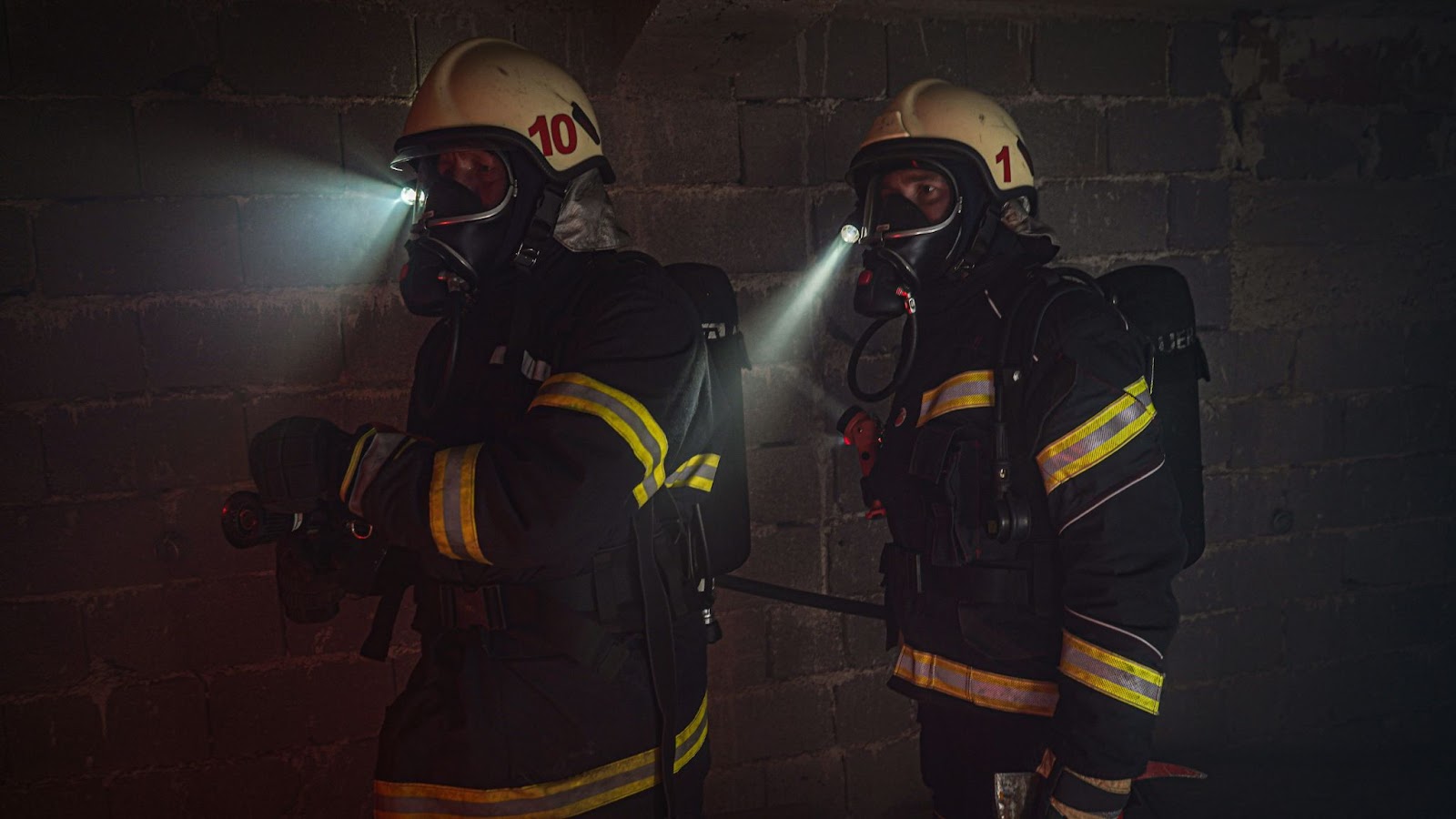
Fire Scene Examination
At the start of every investigation, examiners will first work to secure the fire scene. This is vital for preserving evidence and, just as importantly, ensuring safety. Now, with the site secure, they can start to put their fire investigation procedures and techniques to work.
Thoroughly searching the environment, they’ll begin with the least damaged areas before moving on to the worst-affected locations. As well as collecting physical evidence, they’ll identify burn patterns to determine the fire’s origins, documenting their discoveries with photos and sketches along the way.
Ultimately, the investigator will aim to determine not only the fire’s point of origin and cause but also whether it was accidental, natural, or deliberate.
Evidence Collection
One of the most important elements of arson investigation is, without doubt, collecting evidence. Working carefully yet methodically, investigators will scour the area for various types of evidence. This could be physical clues, like debris, electronics, accelerant containers, and chemical residues, or even witness statements, which can uncover vital information about events before the fire.
After considering how this evidence could factor into the cause of a fire, like whether the presence of a potential accelerant chemical could point to arson, investigators will carefully catalog their findings. They may need to rely on these items to support their testimony in court, so integrity and admissibility are key here. That’s why it’s so crucial that all evidence is carefully handled, labeled, and documented.
Fire Dynamics Analysis
When investigators are looking for a possible fire origin, one of the arrows in their quiver is fire dynamic analysis. By having an understanding of how fires typically behave, they can scrutinize factors like smoke movement, heat release, and flame spread to help pinpoint likely ignition sources.
This method demands an advanced knowledge of fire science but can produce incredible insights. And just as important as discovering whether a fire was accidental or deliberate, fire dynamics analysis can back up an investigator’s findings with a solid scientific foundation.
Reporting and Testifying
When an arson investigator is creating their report, there’s a few things that need to be included as standard. Starting with a thorough description of the scene, they need to note all collected evidence, provide details of any analysis they’ve performed, and ultimately, include a clear and reasoned conclusion to their investigation. In addition, an investigator may need to include photographs, diagrams, and sketches to illustrate their findings.
Remember, an investigator’s report is their official record of the investigation. Therefore, the information it contains needs to be detailed, organized, professional, free of bias, and, above all else, accurate.
After completing their report, an investigator may then need to appear in court to provide expert testimony. Here, the requirements are much the same as when preparing their report - answers need to be clear, thorough, and accurate. What’s more, investigators should also be prepared to answer off-the-cuff questions from both defense and prosecution. So, confidence, effective communication, and expert knowledge of the case are essential.
Testifying in court is a big responsibility, and investigators should be prepared for it. They need to make sure they’ve fully familiarized themselves with the details of the case, considered any questions they may be asked, and rehearsed their answers.
During their testimony, the key is to be as straightforward and clear as possible. Investigators should try to stay composed, maintain professionalism, and avoid using technical jargon that laypeople might be unfamiliar with.
Under the umbrella of arson investigation, there’s several specialized fields - and each has its own set of unique challenges and techniques. Whether investigating vehicles, electronics, or industrial settings, each type of fire has its own characteristics. More importantly, each fire type also demands different ways of collecting evidence and determining the cause.
When examining a specialized fire scene, arson investigators need a thorough understanding of the type of fire that caused the incident. Without it, accurately identifying fire sources and contributing factors could prove impossible.
Vehicle Fire Investigation
As the name suggests, vehicle fire investigation focuses on fire scenes that center around an automobile. In addition to standard fire science knowledge, investigators also need to have a good understanding of automotive systems and how they shape fire behavior. What’s more, they must consider some of the unique challenges that vehicle fires can present. Common scenarios include the presence of flammable liquids, electrical components, and a wide range of materials.
When investigators attempt to analyze burn patterns, they need to take into account potential complications, like weather conditions and mechanical failures. But just as with other fire types, proper documentation and a methodical approach to evidence collection remain paramount.

Evidence in Vehicle Fires
When they’re collecting evidence in vehicle fires, investigators again have to take into account factors that are unlikely to appear in other types of fires. Physical evidence could range from standard telltale signs, like accelerant containers, to less obvious items, such as burnt wiring and faulty mechanical components.
After searching for physical evidence, investigators must also painstakingly check for chemical residues, like flammable liquids that could indicate arson. As with any fire scene, once all possible evidence has been retrieved, investigators must carefully and thoroughly document their findings. Their report is valuable for both criminal cases and insurance claims, so it’s important to provide as much detail as possible. Photographs, sketches, and witness testimonies should all be included.
Electrical Fire Investigation
Another highly specialized area of arson investigation is electrical fire investigation. As with vehicle fires, this field demands expert knowledge of the subject matter. In this case, the subject revolves around electrical systems, wiring, and components.
When looking for potential ignition sources, investigators need to cast an expert eye over electrical systems to identify likely causes of electrical faults. These could be things like short circuits, overloaded circuits, faulty wiring, electrical arcing, or even melted insulation.
With potentially complicated systems, distinguishing between accidental and deliberate fires can prove challenging. That’s why expert knowledge and a keen eye for detail are so important when investigating electrical fires. And once an investigator has determined what they believe is the cause of the fire, it’s critical that they back their findings through thorough analysis and proper documentation.
Identifying Electrical Faults
As we briefly touched on, identifying the source and cause of electrical fires is indeed challenging. So, how do investigators manage it? Well, initial work includes carefully scrutinizing all wiring, electrical panels, and any connected devices. During this examination, they’ll check for giveaway signs of electrical faults – short circuits, melted insulation, burn marks, and damaged components.
In addition to visual inspections, investigators analyze electrical load records and inspect circuit breakers for evidence of tripping or failure. And if there’s still no sign of what caused the fire, investigators can fall back on some handy tools. Equipment like infrared cameras and multimeters can detect faults that would otherwise remain hidden.
Arson investigators must always adhere to legal standards and ethical guidelines throughout their investigation. In doing so, they can preserve the integrity of their work and protect the rights of all involved parties. As such, fire investigators need to maintain a good understanding of the legal process, including the framework that governs fire investigation and the complexities of the legal system.
Investigators should also strive to maintain ethical standards. Common principles include avoiding conflicts of interest and ensuring their investigations are fair, transparent, and without bias.
Legal Framework
A key part of fire arson investigation training is building knowledge of the relevant legal framework that governs the profession. Consisting of various laws, regulations, and investigatory standards, this framework ensures that all investigations are fair and methodical. What’s more, it works to protect the rights of victims and suspects alike.
A fundamental element of the legal framework is due process. This device dictates that arson investigators always stick to well-established procedures, from evidence collection to documentation and reporting. This could include things like obtaining warrants, respecting an individual’s right to privacy, or simply maintaining integrity throughout the investigation. Furthermore, by setting out requirements for handling, documenting, and presenting evidence, due process also works to ensure that any evidence presented in court is admissible.
Evidence of Admissibility
When it comes to fire arson investigations, the admissibility of evidence is absolutely critical. Evidence must be collected, documented, and preserved in accordance with legal standards. This involves keeping a clear chain of custody, proper labeling, and avoiding contamination.
What’s more, arson investigators must ensure that their methods of obtaining evidence meet the required legally-recognized scientific standards. Evidence is at the center of all cases, ultimately determining the outcome. So, it’s essential that investigators follow strict protocols and maintain the highest standards at all times.
Ethical Standards
Alongside a critical legal framework, arson investigators must also go to great lengths to follow a series of ethical guidelines that are fundamental to their practice. At all times, investigations should be conducted with integrity, fairness, and transparency. What’s more, investigators should also strive to promote honesty, objectivity, and respect.
Integral to these ethical guidelines is the principle of avoiding conflicts of interest. This occurs when an investigator’s personal or professional interests interfere with their work. A conflict of interest can result in a compromise of objectivity and impartiality. In the worst cases, it can put an investigator's findings and the case itself in jeopardy. As a result, arson investigators need to raise any potential conflicts of interest in advance. They may even need to recuse themselves from a case should there be any questions about their impartiality.
Respecting ethical guidelines isn’t just a question of preserving the integrity of an investigation, though. Failure to adhere to these essential procedures could cause the public to lose all trust in the investigative process.
Hands-on practical experience is essential, allowing learners to pick up skills that are difficult to replicate in the classroom. That’s why fieldwork is such a key component of fire arson investigation training. Whether it’s internships, on-the-job training, or simulated fire scenes, these opportunities provide invaluable experience and the chance to put theoretical knowledge to the test.
Real-world experience adds a whole new dimension to an arson investigation training program. By interacting with seasoned professionals, trainees can gain practical insights into core skills like analysis, scene examination, and evidence collection. What’s more, this same collaborative environment is essential for helping trainees build the confidence that’s so important when handling complex fire investigations.
Internship Opportunities
When starting a journey into arson investigation, many trainees choose an internship for their first taste of practical experience. Internships are typically available via fire departments, law enforcement agencies, and fire science education programs. Alternatively, you can try networking at industry conferences and joining professional associations. These events can provide additional opportunities to get your foot in the door.
During an internship, a trainee will gain vital hands-on experience in the whole investigation process. This could include assisting in examinations of the fire scene, collecting and preparing evidence, taking photographs, assisting with reports, and even taking part in witness interviews.
Beyond the fire scene investigation phase, interns may also have the chance to gain experience in the courtroom. By witnessing court proceedings and evidence presentations first-hand, trainees can gain incredible insight into how they need to prepare for their own testimonies in the future.
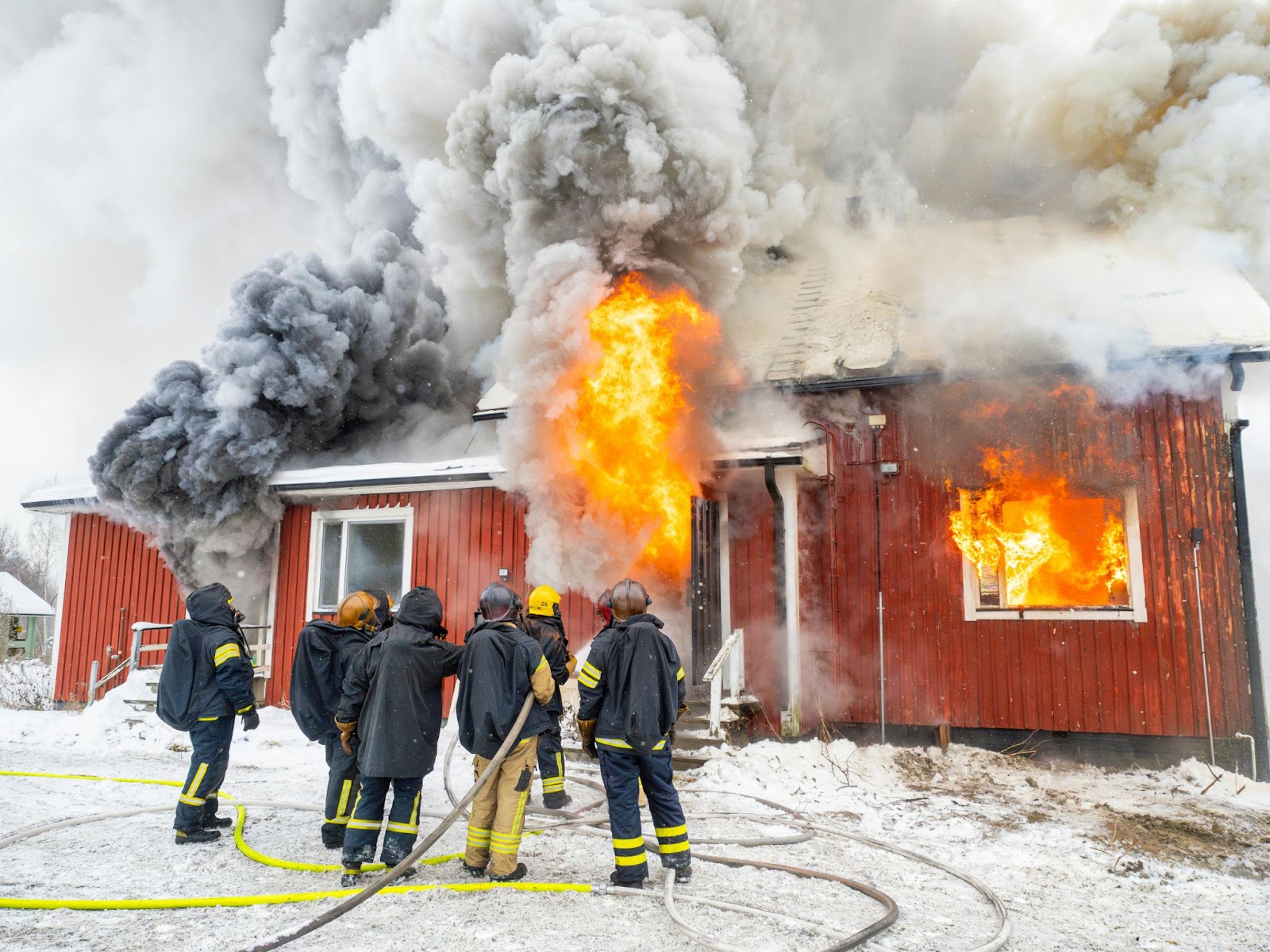
Real-World Scenarios
A key challenge of fire arson investigation training is gaining access to essential practical experiences. Opportunities to spend time on live investigations may be limited. However, modern technology means trainees can take part in accurate replicas of real-world scenarios.
Currently, training programs, like Shasta County's Arson Task Force vehicle fire investigation training, frequently make use of simulated fire scenes that accurately represent real fires without the associated risk. Using controlled environments like the Advanced Fire and Arson Training Complex’s multi-story burn cells, trainees can access incredibly realistic fire scenarios. As a result, future investigators can hone the valuable skills they’ll need for the job. This can include identifying burn patterns, collecting evidence, and determining points of origin. What’s more, they can also further develop crucial soft skills like critical thinking and problem-solving.
Post-Burn Analysis
Post-burn analysis is a key part of fire arson investigation training. Thankfully, one that can be well covered through simulated fire scenarios. Essentially, this analysis involves conducting a thorough investigation of the scene to uncover the origin and cause of a fire. To do so, trainees must use their skills in analyzing burn patterns, collecting evidence, and, finally, accurately documenting their findings.
Through repeated post-burn analysis, trainees gain valuable opportunities to stretch their theoretical knowledge, apply it to real-world scenarios, and further hone their investigative skills.
Today, modern innovations continue to enhance the scope of fire arson investigation training. With advanced tools for data collection, analysis, and reporting, and improved software for fire modeling and forensic analysis, investigations are becoming ever more efficient, streamlined, and, crucially, accurate.
Digital case management platforms like Blazestack are at the forefront of new technologies. With modern solutions for logging, documenting, and reporting fire investigations, professionals have easy access to all the tools they need to enhance their fire investigation procedures and techniques.
One of the most important tools in modern investigation is fire modeling software. Aiding investigators by simulating fire behavior and analyzing progress, software like Fire Dynamics Simulator and Computer Model for Fire and Smoke has become practically indispensable.
With the ability to recreate specific scenarios, study flame spread, and identify possible fire sources, these tools help investigators quickly establish a hypothesis. More to the point, they provide a scientific basis for their findings and further enhance the accuracy of investigations.
Forensic Analysis Tools
Alongside the latest cutting-edge technological advances, tried and tested forensic analysis tools continue to fulfill a vital function in arson investigation. Enabling investigators to accurately analyze things like chemical residue, these tools are essential for gathering evidence to help determine the cause of a fire. What’s more, they provide accurate and reliable scientific support for an investigator’s findings.
Gas Chromatography-Mass Spectrometry (GC-MS) is a powerful method of separating chemical mixtures to identify individual substances. In doing so, investigators can then confirm the presence of flammable chemicals, accelerants, and other components that could indicate arson. When an investigator suspects arson, this information is vital, adding to the gathering of evidence and ultimately supporting their findings.
Another valuable tool in the investigator’s kit is Infrared Spectroscopy. By measuring the absorption of infrared light by chemical compounds, this technique can build a detailed fingerprint of various substances contained within the scene of the fire.
With the analysis, investigators can then use these fingerprints to identify the presence of specific materials, including flammable liquids and accelerants. Moreover, Infrared Spectroscopy is non-destructive. So, investigators can use this method to analyze the scene without compromising its original state.
Digital Case Management
Modern digital case management platforms have revolutionized the way fire investigators handle their examinations. Essential tools like Blazestack simplify administrative tasks associated with fire investigation and arson investigation training. As a result, you can streamline everything from logging and documenting to reporting on fire investigations.
With centralized cloud storage, Blazestack enables seamless, secure access for multiple users on different devices. This makes collaboration a piece of cake, with the information you need always right at your fingertips. What’s more, the platform also includes incredible time-saving features. You'll have the ability to auto-generate NFPA 921-compliant reports or log data, including photographs and statements, securely from your smartphone.
By reducing administrative tasks and streamlining data collection, these incredible key features can enhance accuracy, improve efficiency, and enable seamless preparation for legal proceedings. Furthermore, investigators can rest safe in the knowledge that their critical data is easily accessible by the people who need it. At the same time, you won't need to worry about security; your information is safely protected against loss and tampering.

If you’re planning a career in fire arson investigation, continuous education and professional development are essential. By investing time in achieving certifications from accredited organizations like the International Association of Arson Investigators (IAAI), you’ll give yourself the very best chance of enhancing your career prospects.
One such IAAI program in particular, the Certified Fire Investigator program, ranks as one of the most respected industry certifications. It’s not an easy qualification to achieve. However, the potential career rewards more than make up for the time and effort you’ll need to invest. The certification includes a rigorous two-year training program, covering the processes and techniques investigators use in fire cause and analysis; however, in addition, you’ll also need to defend a thesis and pass a comprehensive exam. The CFI program is also suitable for those looking to work in one of the specialized fire investigation fields, with further in-depth areas of study available.
Taking part in advanced training programs and workshops doesn’t only sharpen your skills. They can also open up a whole world of new opportunities. Along with staying up to date on the very latest technology and best practices, you’ll also benefit from new networking opportunities. These insightful meetings can help you gain access to resources to assist you with career growth.
Continuing Education
Once you’ve become a certified fire arson investigator, what should you do next? Well, in order to stay current with all the latest advances and techniques, continuing your education is vital. Thankfully, there’s a wide range of advanced training programs, workshops, and online courses available to enhance your skills and knowledge.
Some of the most popular courses are run by organizations like the National Association of Fire Investigators (NAFI) and the U.S. Fire Administration. The groups run programs that cover topics such as fire dynamics, evidence collection, and forensic analysis. Furthermore, by joining one of these organizations, you’ll also gain access to a host of conferences, workshops, and seminars. These gatherings can all unlock networking opportunities, additional resources, and support for your career growth ambitions.
Networking Opportunities

Certifications are, of course, essential for your career in fire arson investigation. But you can also unlock powerful connections and resources by making the most of networking opportunities. After joining a professional organization, you’ll have open access to attend industry events. Then, you’ll open up a new world of networking. With this, you'll have the chance to connect with peers, share knowledge, and collaborate on research and investigations.
Another benefit of these powerful connections is the very real chance to further your career. Sharing ideas can present the opportunity to learn new and valuable skills and gain insights into developing technologies and techniques. All of this knowledge can prove essential when you’re aiming to advance your career.
So, as we reach the end of our all-encompassing guide on fire arson investigation training, let’s take a moment to recap the key points that we’ve covered. Whether you’re just starting out in fire investigation or you’re an industry veteran looking to sharpen your skills, we hope these points will prove valuable when you’re looking to build a foundation for or further improve your professional development:
- Fire arson investigation requires a combination of fire science, forensic analysis, and criminal investigation to determine the cause and origin of fires.
- Specialized arson investigation training programs, like the AFATC, are available for advanced, scenario-based learning.
- Practical fire scene investigation techniques remain an essential element of the field. Techniques include systematic examination, evidence collection, and fire dynamics analysis.
- Continual advancements in technology include introducing new tools, such as fire modeling software, forensic analysis tools, and digital case management platforms. These tools offer enhanced investigation efficiency and accuracy.
- Continuous education, additional certification, professional association membership, and networking are all crucial for career advancement and staying up-to-date with industry advancements.
- Legal and ethical considerations are a vital part of fire arson investigation, ensuring integrity and fairness.
As we’ve discovered in this article, fire arson investigation is an exciting and ever-evolving industry. It demands a complex blend of skills, knowledge, and commitment. Those seeking to stay at the cutting edge of arson investigation will need to seek continual development. This could include additional learning, hands-on experience, and keeping up-to-date with all the latest tools and techniques. That said, the key to a successful career in fire arson investigation lies beyond staying abreast of the latest advancements. Investigative abilities, a commitment to excellence, ethical conduct, and a passion for justice are every bit as important.
Whether you’re starting your journey or preparing to take the next step, Blazestack is here to offer support and guidance whenever you need it. For more information on the tools and resources we can provide or how Blazestack can benefit your fire investigation unit, visit Blazestack or contact our sales team at (866) 303-4344.
Trusted by Public and Private Investigator Teams Everywhere
Whether you're a big state agency, a small local fire department or somewhere in between, Blazestack software (NFPA 921® & CJIS compliant) collects fire scene data and generates standardized origin and cause reports in a fraction of the time of other methods.
To learn more about Blazestack, give us a call at (866) 303-4344 or email us at support@blazestack.com
Get Your Free 14-Day Trial and Custom Price Quote Now
We'll let Blazestack do the talking. Try it out right now for free.
A member of our staff will be in touch shortly.
